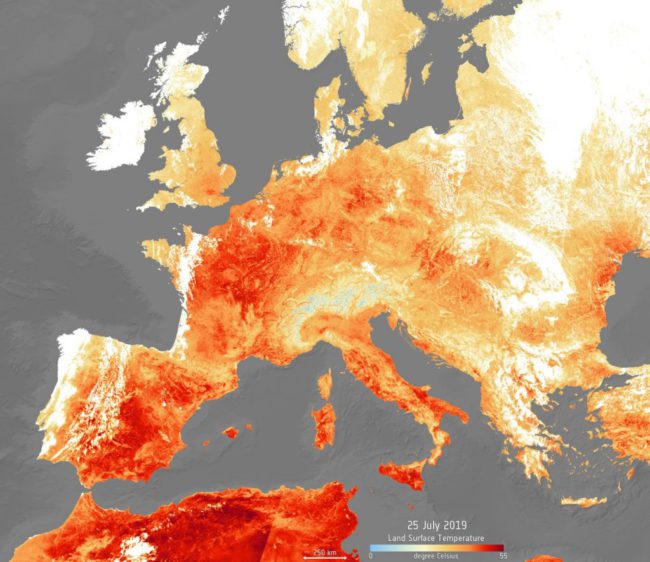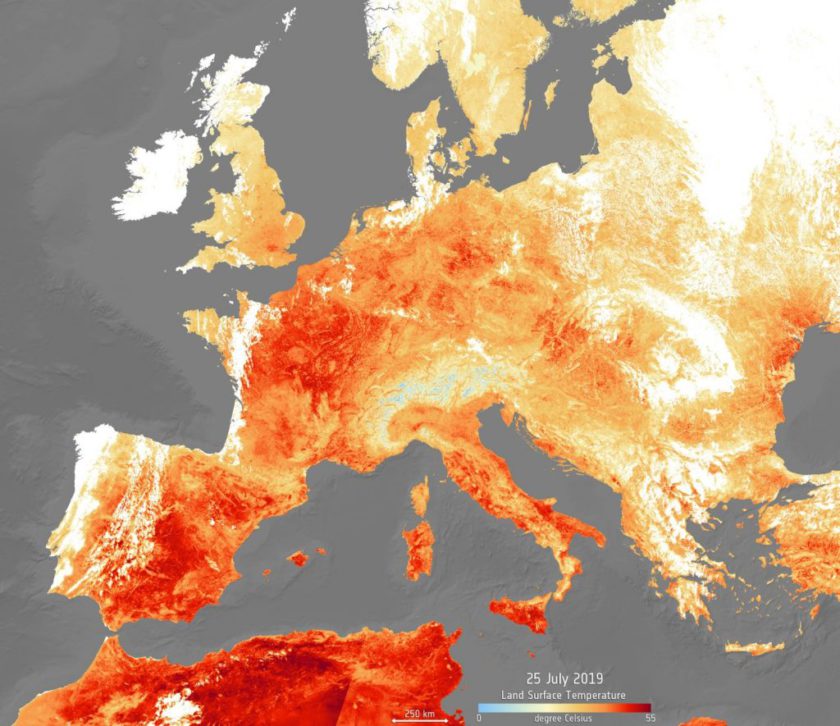
I have two new studies to cover today. Both are interesting because they add data to the conversation. One reveals that parts of Europe are warming faster than the models predict, and the other reveals that Europe is flooding exactly as the models predict.
Let’s take a quick look at each.
Study 1: Detection of a Climate Change Signal in Extreme Heat, Heat Stress, and Cold in Europe From Observations
Published within the AGU journal Geophysical Research Letters, this new study finds the number of summer days with extreme heat has tripled since 1950 and summers have become hotter overall, while the number of winter days with extreme cold decreased in frequency by at least half and winters have become warmer overall.
In a warming world this is a trend we should expect. What is a surprise is that parts of Europe are warming faster than climate models predict.
Numbers
The number of extreme heat days in Europe has tripled since 1950, while the number of extreme cold days decreased by factors of two or three depending on the region.
- Extremely hot days have become hotter by an average of 2.30 degrees Celsius (4.14 degrees Fahrenheit)
- Extremely cold days have warmed by 3.0 degrees Celsius (5.4 degrees Fahrenheit) on average.
The hottest days and coldest nights warmed significantly more than their corresponding summer and winter mean temperatures.
European Average?
What is also worth appreciating is that it gets rather complicated. Individual regions throughout Europe experienced drastically different temperature trends, which makes it difficult to compare the average European temperatures to specific stations’ extremes.
Study Author Comments
Ruth Lorenz, a climate scientist at the Swiss Federal Institute of Technology in Zurich, Switzerland, and lead author of the new study…
“Even at this regional scale over Europe, we can see that these trends are much larger than what we would expect from natural variability. That’s really a signal from climate change,”
“We looked further at the hottest day or coldest night per year, so for each year we looked for the maximum/minimum value and how these changed over time,”
What Comes next?
European summers and winters will only grow hotter in the coming years as climate change accelerates, impacting cities and people unprepared for rising temperatures, according to the study authors.
Lots of people don’t have air conditioning for instance and it makes this really important,” Lorenz said. “We expected results based on modeling studies but it’s the first time we see it in what we’ve observed so far.”
Study 2: Changing climate both increases and decreases European river floods
Published within Nature on 28th August 2019, this study demonstrates clear regional patterns of both increases and decreases in observed river flood discharges in the past five decades in Europe, which are manifestations of a changing climate.

n = 2,370 hydrometric stations
Changing patterns
- Increasing autumn and winter rainfall has resulted in increasing floods in northwestern Europe
- Decreasing precipitation and increasing evaporation have led to decreasing floods in medium and large catchments in southern Europe
- Decreasing snow cover and snowmelt, resulting from warmer temperatures, have led to decreasing floods in eastern Europe
Study Author Comments
Günther Blöschl, lead author, and director of the Centre for Water Resource Systems at the Vienna University of Technology…
The study shows “clear flood risk patterns across Europe that match the projected impacts of climate change,”
“For each year, we picked the maximum discharge and looked at how these annual peaks change over time,”
Floods are increasing in northwestern Europe because global warming is increasing moisture in the atmosphere, making storms wetter, and shifting the track of incoming storms northward, bringing more rainfall to the region. The storms are also moving slower, so they drop more rain over river catchments, he said.
“We know the mechanism. A warmer atmosphere holds more moisture. Rainfall is increasing, so there’s more water for the floods,”
“Also, the soils are wetter so they can’t take up water, but this is not the most relevant factor,” he said. “More relevant is that the storm tracks are farther north than they were in the past, which means the Mediterranean gets less, the northwestern regions get more rain.”
The study doesn’t make specific projections for the future, but ….
“it implies that what we have seen in the past may continue into the future, and what we’ve seen is well accounted for in climate models,”
Blöschl hopes the findings will encourage better flood preparation and planning.
“There is a saying: ‘After a flood is before a flood,'” he said. “It’s wise to build levees before a flood, but it never happens. Public spending only starts if there is visible damage.”
(Side note: Blöschl is one of many. The list of contributors is vast and spans many institutions right across Europe).
What does this tell us?
It is further data that reveals that the climate models are correct. The flood changes that they have identified are broadly consistent with climate model projections for the next century. Note that this is not a projection, it is actual observational confirmation.
Further Reading
Warming In Europe
- Study published in AGU journal Geophysical Research Letters (17 Jul 2019): Detection of a Climate Change Signal in Extreme Heat, Heat Stress, and Cold in Europe From Observations
- AGU Press Release (28 Aug 2019): EUROPE WARMING FASTER THAN EXPECTED DUE TO CLIMATE CHANGE
Flooding in Europe
- Study published in Nature (28 Aug 2019): Changing climate both increases and decreases European river floods
- Inside Climate News (28th Aug 2019): Climate Change is Shifting Europe’s Flood Patterns, and These Regions Are Feeling the Consequences
